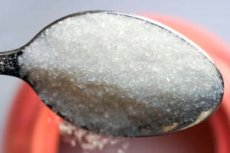New publications
Sweet taste receptor affects glucose metabolism in humans
Last reviewed: 02.07.2025

All iLive content is medically reviewed or fact checked to ensure as much factual accuracy as possible.
We have strict sourcing guidelines and only link to reputable media sites, academic research institutions and, whenever possible, medically peer reviewed studies. Note that the numbers in parentheses ([1], [2], etc.) are clickable links to these studies.
If you feel that any of our content is inaccurate, out-of-date, or otherwise questionable, please select it and press Ctrl + Enter.

Monell Research has a rich history of sweet taste research. Monell scientists were one of four teams that discovered and characterized the mammalian sweet taste receptor TAS1R2-TAS1R3 in 2001. Twenty years later, in 2021, a pair of papers published by Monell researchers in the journal Mammalian Genome highlighted the genetics of sugar-loving mice.
The sweet taste receptor, expressed in taste bud cells, transmits the sensation of sweetness from the mouth when activated. Earlier this month, a study by another Monell researcher, published in PLOS One, explored how the sweet taste receptor may be the first stop in the metabolic sugar surveillance system. The receptor is also expressed in certain cells in the intestine, where it may facilitate glucose uptake within that system.
The team found that stimulation and inhibition of TAS1R2-TAS1R3 indicate that it helps regulate glucose metabolism in humans and may have implications for the management of metabolic disorders such as diabetes. Glucose is the main type of sugar in human blood, making it a key source of energy for cells.
"Our goal was to determine whether TAS1R2-TAS1R3 affects glucose metabolism in two ways," said Dr. Paul Breslin, professor of nutritional sciences at Rutgers University and senior author of the paper.
They showed that a TAS1R2-TAS1R3 agonist (sucralose, a zero-calorie sweetener) or a TAS1R2-TAS1R3 antagonist (lactisol, a sodium salt that inhibits sweet taste), when mixed with a glucose-containing meal, differentially altered glucose tolerance in humans. The agonist binds to the receptor and stimulates the cell, while the antagonist binds to the receptor and prevents stimulation.
"The novelty of our findings is that the receptor we studied in this experiment affects blood glucose and insulin levels differently during a glucose-containing meal depending on whether it is stimulated or inhibited," Breslin said. This work provides further evidence that taste receptors help regulate metabolism and nutrient absorption.
Plasma insulin levels were measured in study participants who underwent an oral glucose tolerance test (OGTT), which monitors blood sugar levels before and after ingesting a liquid meal containing glucose. Participants’ ratings of sucralose sweetness correlated with the early rise in plasma glucose, as well as with the rise in plasma insulin when sucralose was added to the OGTT. Added sucralose accelerated the insulin release in response to a glucose load. Conversely, participants’ sensitivity to lactosyl sweetness inhibition correlated with a decrease in plasma glucose. Lactosyl also delayed the insulin release.
"When glucose stimulates taste receptors before it is absorbed into the body, signals are transmitted through the mouth and gut to regulatory organs like the pancreas. Perhaps we could develop ways to use TAS1R2-TAS1R3 to help the body better handle glucose by anticipating its appearance in the blood," Breslin said.
"This system is elegant in its simplicity," Breslin said. The same taste receptor is found throughout the body—in the mouth, gastrointestinal tract, pancreas, liver, and fat cells, which are the master regulators of metabolism, part of the body's 24/7 metabolic surveillance.
Is there a link between a person's health status and the activity of their TAS1R2-TAS1R3 receptors? The study authors think so, suggesting that the degree of receptor activation has an acute effect on plasma glucose and insulin levels, which is important for metabolic health.
The team believes that current dietary habits involving excessive consumption of foods and drinks high in sucrose, high-fructose corn syrup and high-potency sweeteners may overstimulate TAS1R2-TAS1R3, leading to abnormal blood glucose regulation. This can lead to metabolic syndrome, which increases the risk of heart disease, stroke and diabetes.
"Studies like these show that the sweet taste receptor TAS1R2-TAS1R3 helps regulate glucose differently depending on the sweetness of a food or drink," Breslin said. The team hopes to apply this knowledge to improve the health of foods and drinks.
"A small positive metabolic change can greatly improve people's lives and health if it accumulates over decades and spreads to millions of people," Breslin said.
